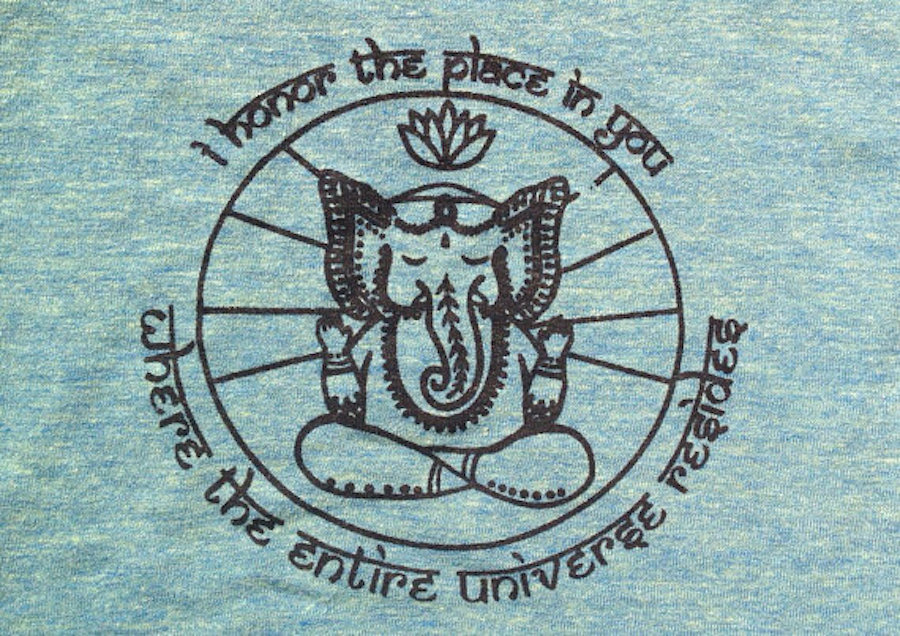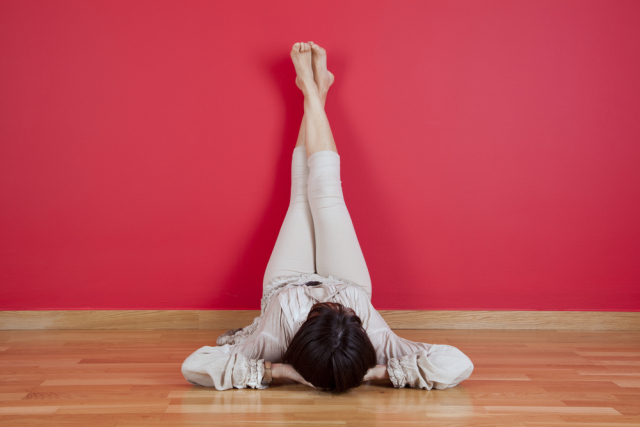
Written by Alka Kaminer.
What is restorative yoga?
Think of restorative yoga as the polar opposite of the high-adrenaline, often competitive “power yoga” that seems to dominate these days.
Restorative yoga is a quiet, meditative practice that makes extensive use of props such as bolsters and blocks, enabling you to hold a pose for up to 20 minutes. By holding specific stretching and healing poses and concentrating on your breathing, restorative yoga brings about a state of deep calm to both body and mind.
While doing each of the poses, close your eyes and bring your attention to your breath. With every exhalation, feel yourself relaxing completely.
Here are three of my favorite restorative poses:
1. Supported Bound Angle Pose
Benefits: Relaxes the belly and shoulders and opens the chest and heart for better breathing. Relieves sciatica, varicose veins and menstrual pain.
- Place a bolster the length of your upper body on the floor behind you so that one end of the bolster supports your tailbone.
- Bring the soles of your feet together in a diamond shape and place a block or blanket under the outside of each knee.
- Bringing your hands behind your back on either side of the bolster, gently lower your back down onto the bolster so you are lying on top of it. (Make sure your back is resting on the bolster from your lower back all the way up to your neck.) Be aware of your neck and chin. If you find that your chin is jutting upward, place an extra blanket under your neck for support to help align the neck with the spine. (See how this pose is done in the main photo, above.
2. Supported bridge pose
Benefits: This pose is great for runners, or anyone who has to stand for long hours. It helps reduce fatigue in the legs and hip muscles, and can help alleviate headaches as well.
- As in the previous pose, place a bolster the length of your upper body on the floor. Sit at one end of the bolster and, using your hands on either side, gently lower your back down onto the bolster from your lower back all the way up to your neck.
- Carefully slide your shoulders back off the end of the bolster so they touch the floor.
- Buckle a strap across your upper mid-thigh to help keep your legs together. (You may need to put a blanket beneath your neck for support. If you feel a strain in your lower back, bend your knees and plant your feet on the floor.) The pose looks something like this.
3. Legs up the wall pose
Benefits: This pose can help alleviate insomnia and stress.
When doing this pose, I like to start by taking a folded blanket and placing it against the wall. (Another common variation is to place a bolster about six inches from the wall.)
- Bring your right or left hip to the wall so you are lying sideways against the wall then swing your legs up the wall and straighten them. Your buttocks should be touching the wall and your lower back on the floor on top of the blanket.
- Move your buttocks toward the wall as close as you can get them. If you can’t reach the wall, place a bolster behind your legs for support.
- Straighten and lengthen your legs towards the ceiling and flex your ankles. You can buckle a strap around your mid-thighs to keep your legs together.
- Bring your arms alongside your body with palms facing up, allowing your shoulders and back to release to the floor. You may need a rolled-up towel or blanket beneath your neck for support. You will look something like this.
- Take a deep breath and allow your body to rest and focus on your breath. Keeping your eyes closed as you go even deeper inward.
Bonus:
Restore yourself even more with this tech timeout meditation…
[dynamic-sidebar id=’Custom Widget 2′]
~Asst. Ed. Green Diva Christine
